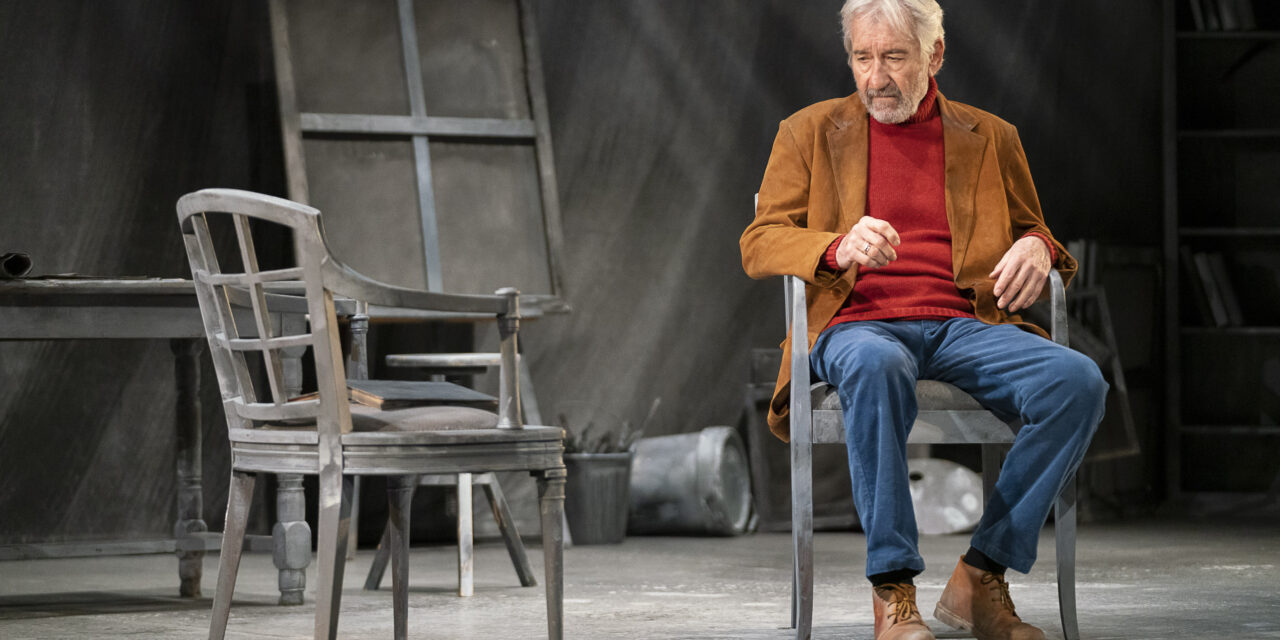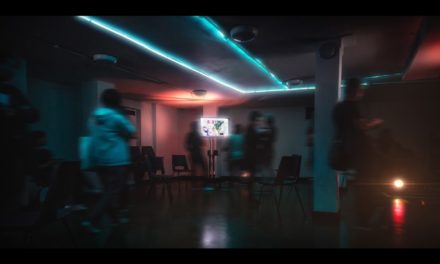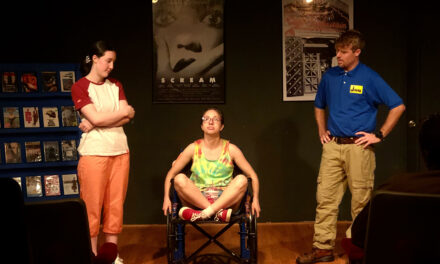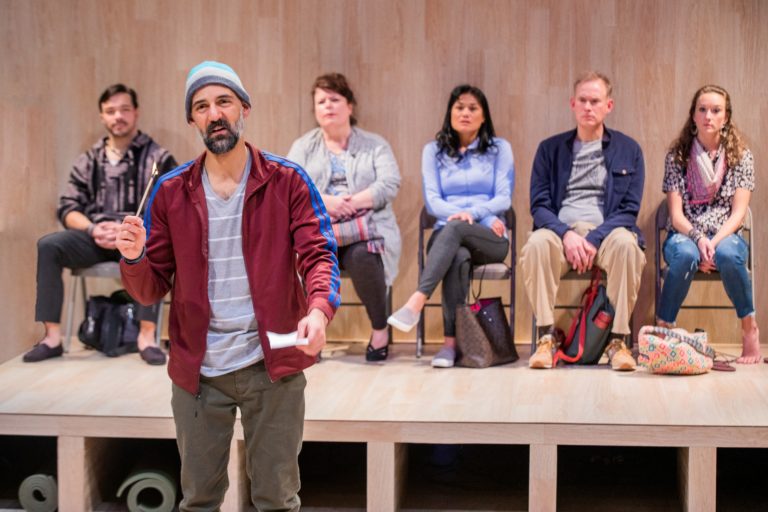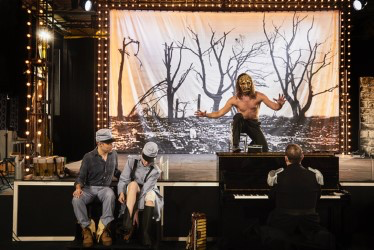Miguel Delibes wrote his novella Señora de rojo sobre fondo gris (English title Woman In Red Against A Grey Backdrop) in 1991. It is one of his most autobiographical pieces, a love letter to his wife Ángeles de Castro who died in 1990 at the age of 50. Adapted for the stage by actor José Sacristán, director José Sámano and the staging’s assistant director Inés Camiña, it is a project with its genesis in a 2007 homage to Delibes where Sacristán read a fragment of the novella and the novelist contacted Sámano in the hope of bringing a full adaptation to the stage. It’s taken a decade but the production is now enjoying an extended run at Barcelona’s Romea theatre.
Woman in Red Against a Grey Backdrop centers on a painter, Nicolás, who narrates the failing health and subsequent death of his beloved wife at the age of 48 to his daughter Alicia who has been imprisoned for political reasons in the final year of Franco’s dictatorship. In this adaptation, it is the audience, rather than Alicia, who function as the listener. Ana’s death is no surprise—he signals that it is coming early on—so it’s the circumstances that lead to her demise, and how they both cope with her ailing physical condition that the piece centers on. The play captures their intimacy and her death from a brain tumor. Ana is a tangible presence conjured through Nicolás’s loving language. When Nicolás speaks of her, his face lights up. He welcomes her good judgment and advice; he delights in her sense of humor and pragmatism. Without her, he has been unable to paint, unable to move on with his life.
The recordings of Ana’s voice by Mercedes Sampietro are unnecessary for it is through Nicolás’ memories that she is best conjured. He returns to her words, her looks, her reactions and her suggestions repeatedly. He is at his most animated and contented when she speaks through him and with him. Her presence is marked by mystery, by the ability of the audience’s imagination to conjure her from Sacristán’s words and gestures. There is a little irony in his voice when he opens the play, drink in hand with the words “I don’t ignore the fact that drink offers a means for running away from yourself.” His tone is friendly and he confides in the audience as if we are friends invited around for a drink. There is an element of concern early on also; Nicolás and his wife Ana are trying to find out about the fate of their daughter and son-in-law who have been detained for political activism—likely part of the extensive protests that followed the execution of five political prisoners on 27th September 1975. At first concern for his daughter and son-in-law’s welfare seems paramount, but this is displaced by a growing focus on Ana who gradually removes the other family members to the margins of the narrative.
The action takes place in a ghostly room designed by Arturo Martín Burgos bathed in shades of grey. It’s a spectral space, devoid of color and overly literal. Empty frames are balanced against the back wall. A table lies empty save for a few books. Empty pots hold an array of paint brushes. A bookcase holds books that appear as lifeless as the shelves themselves. A forlorn chaise longue looks out of place. A chair tipped onto its side is later picked up by Nicolás. It is as if through narrative, through telling the story of Ana’s illness and death, he is able to make some sort of sense of her absence, to ensure she remains with him. At first, it is the small things that have him concerned—the pain in her shoulder, the loss of energy—but her worsening condition, the diagnosis of a tumor, her loss of hearing and sight is narrated with a sensitivity to the details of how the illness limits her mobility and cognitive reasoning. The narration is devoid of sentimentality. He hunches his shoulders in grief, he moves as if temporarily lost, at times he looks swamped by his dark red jumper and worn rust-colored jacket. He sits on a chair and looks at the empty chair beside him. He tries to make sense of his wife’s loss knowing that the past cannot be rectified. Sacristán avoids histrionics; it is the matter of fact tone to his delivery that proves so effective. He delivers a clean performance where his distinctive voice—deep, rich and resonant—rings out.
The deft skill of Delibes’s writing lies not simply in delineating a portrait of a marriage but also in mapping the broader context of Spain in transition. The piece begins in the winter of 1975, in the final months of Franco’s hold on power—the dictator died in November of that year—and Nicolás, well connected with cultural currency, uses his contacts to try and get his daughter and her husband first out of police custody and then out of prison. Nicolás makes reference to torture—cigarettes stubbed out on prisoners—, to the conditions in which Alicia is held in Carabanchel prison, then Europe’s largest penitentiary and a notorious symbol of Franco’s repressive rule.
Sámano’s production lacks the subtlety of Sacristan’s performance or Delibes’ writing. Sámano is a successful commercial producer as he showed with an earlier Delibes adaptation, Cinco horas con Mario (English title Five Years With Mario) first presented in 1979 and still frequently revived. As a director, however, he is not able to harness the power of the mise en scène to support Sacristán’s performance. Manuel Fuster’s lighting moves to the crepuscular as his wife’s condition worsens, the melancholy piano score opts for a mood of sadness that offers no tonal variance. I am left wondering why Sámano didn’t oft for bare boards and a single chair—a visual space which would have echoed the emptiness of Nicolás’s life in the aftermath of Ana’s passing. It’s clearly a heartfelt project, conceived in homage to Delibes, whom Sacristán counted as a friend and the adaptation that Sacristán, Sámano, and Camiña have fashioned boasts narrative momentum and a keen sense of dramatic pacing. At 81, José Sacristán has commented that he fears this might be his last stage performance. It’s certainly a virtuoso performance but one which doesn’t always fit the staging that has been crafted around it.
Woman In Red Against A Grey Backdrop plays at the Teatre Romea Barcelona until May 12 and is then on tour.
This post was written by the author in their personal capacity.The opinions expressed in this article are the author’s own and do not reflect the view of The Theatre Times, their staff or collaborators.
This post was written by Maria Delgado.
The views expressed here belong to the author and do not necessarily reflect our views and opinions.

